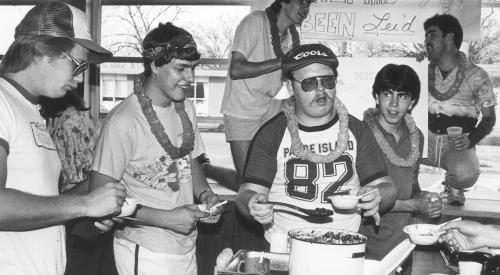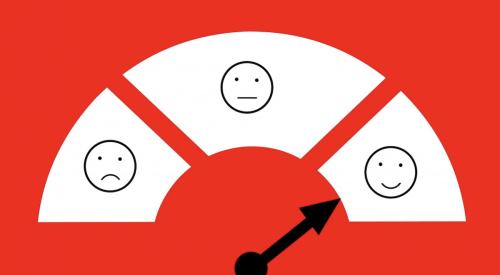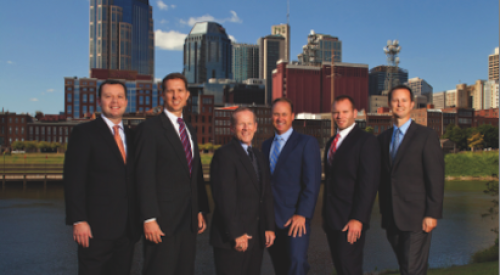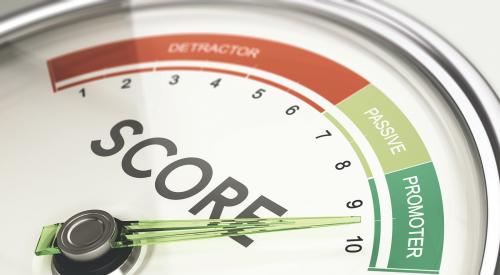As a professional builder, you probably work hard and invest a lot of resources to ensure your customers have the most satisfying experience possible. But good — or even great — satisfaction ratings do not equate the most profitable return on your investment. For that, you need to convert your most satisfied customers into legions of loyalists — happy homeowners who are eager to rave about your business and generate untold referrals.
Before you can focus on developing loyal fans, it's helpful to understand why their loyalty is so important. First, loyalty translates into a steady stream of customer referrals — the lifeblood of any home building operation. Second, loyal customers are more flexible and tolerant during the purchasing and building experience. Third, loyal customers help build positive brand awareness simply by talking favorably about your business. This kind of behavior doesn't always yield immediate referrals, but it goes a long way in supporting the superiority and quality of the brand.
No company understands the power of loyal customers better than Harley-Davidson. In the mid-1980s, the motorcycle company was on the brink of bankruptcy — largely the result of significant problems with customer satisfaction and product quality. As it began the hard work of reorganizing, it also focused on its No. 1 asset — its customers.
The company began capitalizing on its most avid fans by launching the Harley Owners Group (H.O.G.) in 1983. Today, the group has about 1 million members who are passionate about owning a Harley. Membership definitely has its perks, too. There are organized rallies, magazine subscriptions, rewards, trip planners and a simple devotion to the group's mission: to ride and have fun.
By creating a thrilling experience around its products and appealing to its most satisfied buyers, Harley-Davidson has developed a subculture of loyal customers who are tremendously tolerant. Not only do these customers generate referrals, but they also continue to strengthen the brand by embracing it as a lifestyle.
All of this hard work has paid off for Harley, which has seen its stock price change from 34 cents to more than $60 per share.
Most customer relationship management (CRM) programs provide a respectable return on investment, but most builders could be doing much better if they followed Harley's example and maximized the loyalty of their most satisfied clients. Studies show that your happiest customers drive the most referrals, and by focusing more attention on these home buyers, you can achieve greater returns than if you focused equal attention on unsatisfied home buyers.
Before you can target your happiest customers, however, you must identify them. The best way to do this is with a reliable measuring system, such as professionally designed and executed customer surveys.
A lot of home builders survey clients at closing, but our research finds that this surveying method delivers artificially high scores. That's because social desirability effects — the need to be likeable and to avoid conflict — kick in when the builder rep is present. The same thing happens to many people when they are dining in a restaurant and the waiter asks, "How is everything." Most people will say "fine," even if the steak is too rare or the pasta is overcooked. It's a lot easier than complaining, which carries the risk of being labeled socially undesirable.
Our research shows if you survey home buyers seven days after the closing, builders' satisfaction ratings drop 12 points on average. That is partly because the euphoria, hopefulness and excitement the home buyers experienced when closing on their home has waned, and the reluctance to complain or create conflict has subsided — a much better gauge of who is happy and who is not.
Banking on the BestOnce you have identified your happiest customers through reliable surveys, you are now in a position to target them for various CRM programs.
As you go through the surveys of your most satisfied customers — those who say they would recommend you to another home buyer — try to determine whether your happiest customers are absolutely delighted with their purchasing experience. You'll be surprised to discover how many of your satisfied customers are not raving fans. And there lies the opportunity to make them delighted so that their rate of referrals goes up. Your task is to figure out how to convert them from satisfied customers into loyal advocates for your business.
Is this really worth the effort? You bet. Our research shows the transition from good to great satisfaction will result in customers going from making one or two referrals to making 10 or more referrals.
As you are looking over the surveys of your most satisfied customers, focus on a couple of the areas with the lowest scores. Most companies ignore this, reasoning that an overall positive rating is good enough for them. They believe that they fought hard to get to this point and are content to rest on their laurels, not realizing that they left half the money still sitting on the table.
The fact is, this is the easiest time to wow customers because it takes little effort to follow up and fix many of the problems they cite. Most home buyer complaints at this point have to do with cosmetic aspects of their home features, such as cabinets, drywall or paint. Many of these items are inexpensive fixes and will go a long way toward delighting customers.
If these items are not addressed to the customer's complete satisfaction, the home buyer is likely to tolerate the situation and consciously or subconsciously hold back referrals. In the end, you want them to be so delighted that they're talking to everybody about how great you are — maximizing your return on making them happy.
Always Room for ImprovementOne measure of how well you are satisfying customers is how many of your home buyers have referred 10 or more prospects to you. Using this assessment, even the very best builders in customer satisfaction can benefit by tapping into the power of loyalty. Consider the NRS Award winners — the builders who rate tops in customer satisfaction. The following winners tended to exceed other companies in the number of referrals they receive:
- Desert View Homes has 11.8 percent of its home buyers making 10 or more referrals.
- Pulte Homes Arizona has 19.3 percent of its home buyers making 10 or more referrals.
- The Green Company has 25.7 of its home buyers making 10 or more referrals.
- John Lang Homes Denver, NRS Diamond Award Winner (No. 1 Builder in North America in customer satisfaction), has 40 percent of its home buyers making 10 or more referrals.
These results show these award-winning companies receive tremendous value from its relationship with its customers. Regardless of whether each one engages in this type of good-to-great activity to maximize referrals, all of these companies focus hard on making their home buyers happy. Of course, having a system in place that encourages referrals and rewards clients for making referrals is an important part of the equation.
I hope you can find the path to yielding maximum returns on your customer satisfaction investment. There's nothing more powerful than customer loyalty to create business success.
| Author Information |
| Paul Cardis is CEO of NRS Corp., a leading research and consulting firm specializing in customer satisfaction for the home building industry. He can be reached at pacardis@nrscorp.com. |












